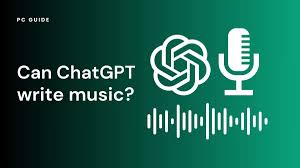If you've ever tried generating music with AI, you've likely hit a wall with vague or inconsistent results. That’s especially true for musicians using ChatGPT to generate chords and melodies. The key to success? Writing precise, clear, and musically intelligent prompts.
In this guide, we’ll walk you through exactly how to write prompts for chords and melodies using ChatGPT. You’ll learn prompt formulas, examples, common mistakes to avoid, and tips for getting musically coherent results every time.
Whether you're a songwriter looking for inspiration or a producer building harmonic progressions, this article is designed to make your ChatGPT music sessions both creative and productive.

Why Use ChatGPT for Music Composition?
Before diving into prompt structure, it’s worth asking: Why use ChatGPT for composing music?
Pros of Using ChatGPT for Music
Instant idea generation for melodies and chord progressions
Customizability: You can control style, emotion, and tempo
Great for overcoming writer’s block
Flexible across genres from pop to jazz to cinematic
Cons of Using ChatGPT for Music
Doesn't produce audio (you'll need a DAW or virtual instrument)
Needs clear input: vague prompts yield poor results
Doesn’t understand music theory like a human—but can simulate it well with guidance
How to Write Prompts for Chords and Melodies: Core Strategy
Step 1: Be Clear About the Genre and Mood
Bad: "Give me a chord progression"
Better: "Give me a four-chord progression in C major that sounds upbeat and funky"
Best: "Write a four-bar chord progression in C major using 7th chords that sounds upbeat, funky, and suitable for a modern neo-soul track"
Pro Tip: Use emotional descriptors (happy, dark, nostalgic) AND musical terms (minor key, 7th chords, syncopated rhythm).
Step 2: Specify Structure and Length
Tell ChatGPT the exact length you need: 4 bars, 8 bars, verse + chorus, etc.
Example prompt: "Give me an 8-bar melody in D minor, written in 4/4 time, that would work as a verse for a sad indie rock song."
Step 3: Use Music Theory When Possible
If you know basic theory, add it! Mention modes, cadence types, voicings, or progression types.
Prompt upgrade: "Write a 16-bar melody in A Dorian with a ii-V-I cadence in bars 13–15."
ChatGPT Prompt Templates for Chords
Basic Pop Progression Prompt: "Suggest a four-bar chord progression in G major that sounds upbeat and fits a pop song."
Jazz-Inspired Prompt: "Create an 8-bar chord progression using extended chords (9ths, 11ths, 13ths) in Bb major that sounds smooth and jazzy."
Cinematic Prompt: "Write a dark and suspenseful chord progression in D minor for a cinematic soundtrack, including dissonant intervals."
Loopable Prompt for EDM: "Provide a loopable 8-bar chord progression for an EDM drop in F# minor with energetic tension."
ChatGPT Prompt Templates for Melodies
Melodic Hook Prompt: "Generate a 4-bar melodic hook in C major suitable for a catchy pop chorus."
Lyrical Melody Prompt: "Write a 6-bar melody in E minor that flows lyrically and works as a verse for a ballad."
Rhythmic Prompt: "Create a syncopated 8-bar melody in B minor for a funk song with off-beat accents."
Classical Prompt: "Compose a 12-bar melody in F major in the style of a Mozart piano sonata."
Common Mistakes to Avoid
1. Too Vague
Prompt: "Write a melody." Result: Random and unusable.
2. Conflicting Instructions
"Give me a dark, happy melody in a major key."
3. No Time Signature or Tempo
This makes rhythmic phrasing ambiguous.
How to Turn Prompts into Music
Once ChatGPT gives you the notes or chord progression:
Copy the output into your DAW or notation software (like FL Studio, Ableton, MuseScore)
Adjust phrasing and velocity to humanize it
Use MIDI instruments to preview the sound
Tweak rhythm or harmony as needed for your taste
FAQs
Q1: Can ChatGPT generate MIDI files for chords and melodies?
Not directly, but you can copy the notes into notation/MIDI software manually.
Q2: What's the best DAW to use with ChatGPT-generated music?
Any DAW works. Popular ones include Logic Pro, Ableton Live, FL Studio, and GarageBand.
Q3: Does ChatGPT know music theory?
Not intuitively, but it can simulate theory well if given structured prompts.
Q4: Can I use these prompts for songwriting?
Absolutely. They’re perfect for breaking writer’s block and creating chord bases.
Conclusion
Writing effective prompts for chords and melodies is like giving good direction to a human collaborator. The more musical information you give ChatGPT, the more musical the output will be. It’s not a magic solution, but it’s a powerful co-writing tool if you speak its language.
So next time you hit a creative wall, come back to these prompt structures—and start composing with confidence.
Learn more about AI MUSIC TOOLS








